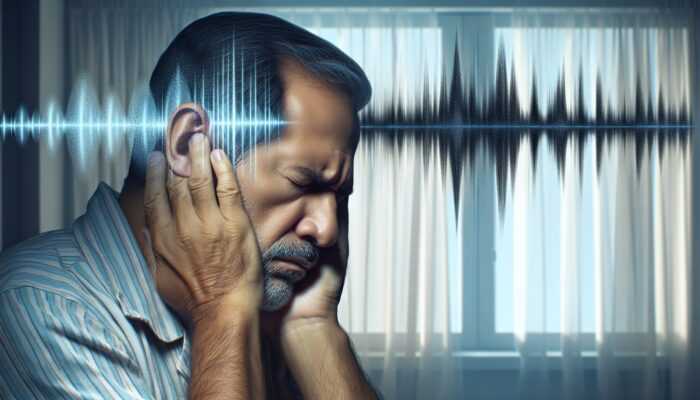Understanding the Impact of Microgravity on Ear Function in Space
The profound effects of space travel on ear health are particularly notable due to the unique challenges posed by the microgravity environment. Astronauts encounter significant alterations in their bodily functions, and the inner ear becomes a critical area of concern. The inner ear is essential for maintaining balance and facilitating auditory perception; however, it experiences substantial changes when Earth’s gravitational pull is absent. This exploration will focus on the intricate effects of microgravity on ear function, starting with the shifts in inner ear fluids and their implications.
Examining Inner Ear Fluid Shifts in Microgravity

In the unique environment of microgravity, the fluid dynamics within the inner ear undergo remarkable shifts. Under normal gravitational conditions, gravity plays a vital role in regulating the balance of fluids within the inner ear’s structures, especially in the semicircular canals and cochlea. However, in the weightless surroundings of space, this equilibrium is disrupted, leading to significant complications such as dizziness and vertigo. Astronauts frequently report feelings of disorientation during the initial phases of their missions, which are largely attributed to these fluid shifts.
Additionally, these fluid shifts can lead to altered pressure dynamics within the ear, creating sensations similar to those experienced during rapid changes in altitude. This can result in a disorienting experience for astronauts who depend on their sense of balance for daily activities and critical operations. The challenge lies not only in managing these shifts while in space, but also in preparing for the readjustment to Earth’s gravitational conditions upon their return. The adaptation period can sometimes extend for several days, complicating an astronaut’s transition back to life on solid ground.
Understanding Changes in Otolith Function in Microgravity
The otoliths, which are tiny structures located in the inner ear, play a crucial role in detecting motion and understanding orientation relative to gravity. In the absence of gravitational cues, the functionality of these structures can be significantly compromised, which greatly impacts an astronaut’s ability to perceive their spatial position. This impairment may lead to delayed responses to changes in orientation, complicating even the simplest of tasks.
For example, during a spacewalk or while navigating within the spacecraft, an astronaut may misjudge distances or misinterpret their own movements because of impaired signals originating from the otoliths. Such disorientation can pose substantial safety risks, particularly during complex maneuvers that necessitate precise movements. Recognizing and understanding these changes is essential for mission planners, as it enables the development of training protocols that effectively prepare astronauts for acclimatization in microgravity environments.
Adapting the Vestibular System for Spatial Orientation
The vestibular system, which is responsible for maintaining balance and spatial orientation, undergoes significant adaptations in the microgravity environment. Initially, astronauts may experience pronounced disorientation as their bodies grapple with recalibrating their internal systems. As they begin to adjust, the vestibular system learns to interpret the absence of gravitational cues, relying more heavily on visual inputs and proprioceptive signals. This adaptation process varies among individuals; while some astronauts acclimatize rapidly, others may require more time to adjust fully.
Upon returning to Earth, the readjustment to gravitational forces can present its own set of challenges. Astronauts may experience symptoms of vertigo as their bodies reacclimate to the familiar gravitational pull. Comprehensive training programs and gradual reintroduction to gravity can play a significant role in mitigating these effects, ensuring a smoother transition back to life on Earth for returning astronauts.
Exploring the Impact of Microgravity on Auditory Perception

The influence of microgravity extends beyond balance; it can also subtly impact auditory perception. The role of the inner ear encompasses not just balance but also sound processing, and alterations in fluid dynamics can affect how sounds are transmitted and perceived. Some astronauts have reported fluctuations in hearing sensitivity, which can complicate communication in the often noisy environment of a spacecraft.
The effects on auditory function highlight the necessity for effective hearing protection and communication protocols aboard spacecraft. As auditory processing can vary, ensuring clear and efficient communication among crew members is crucial for both mission success and the well-being of astronauts. Ongoing research into these auditory effects aims to quantify the extent of these changes and develop strategies to support astronauts in maintaining optimal auditory health throughout their missions.
Assessing the Impact of Space Radiation on Ear Health
In addition to microgravity, the environment of space introduces further challenges to ear health, particularly through exposure to space radiation. As astronauts venture beyond Earth’s protective atmosphere, they encounter elevated levels of cosmic radiation, which can have serious health implications for the ear. Understanding these risks is essential for protecting astronauts’ ear health during their missions and ensuring long-term well-being.
Identifying Cellular Damage in Ear Structures Due to Radiation
Space radiation poses a significant threat of cellular damage within the ear, especially in sensitive structures such as the cochlea and the auditory nerve. Exposure to this radiation can lead to alterations in cellular integrity, resulting in hearing loss or other auditory disorders. Research indicates that prolonged exposure to high levels of radiation may contribute to oxidative stress within ear cells, which can damage DNA and impair normal function.
The consequences of such cellular damage can be severe. Hearing loss, often gradual and unnoticed until significant impairment occurs, presents challenges for astronauts who depend on effective communication and auditory cues. To mitigate these risks, ongoing research is critical to develop protective measures aimed at minimizing radiation exposure during transit or while on extraterrestrial missions.
Evaluating the Increased Risk of Acoustic Neuroma

One alarming potential consequence associated with exposure to space radiation is the heightened risk of developing acoustic neuroma, a benign tumor that affects the auditory nerve. While generally not life-threatening, acoustic neuromas can lead to significant health challenges, including hearing loss, tinnitus, and balance disorders. As astronauts confront this elevated risk, it is vital to understand the association between radiation exposure and this condition for effective preventive strategies.
Monitoring astronauts for early signs of this condition is crucial. Early diagnosis can facilitate timely interventions, thereby reducing long-term consequences. Research focused on effective screening methods and the development of protective environments or technologies can provide astronauts with additional safeguards during their missions, enhancing their overall health and safety.
Implementing Protection Strategies for Astronauts’ Ear Health
As the risks associated with space radiation become increasingly apparent, the development of effective shielding and protective measures is of utmost importance. Advances in materials science are essential for creating spacecraft that can withstand radiation and protect the crew aboard. Research into innovative shielding technologies designed to redirect or absorb radiation is ongoing, with the ultimate goal of minimizing exposure to the ears and other vulnerable bodily systems.
In conjunction with physical shielding, the implementation of health monitoring systems will play a critical role in ensuring astronaut safety. Regular health assessments, including auditory function tests, can help identify any adverse effects stemming from radiation exposure. This proactive approach is vital for enhancing astronauts’ overall well-being and ensuring that their hearing and balance remain intact throughout their missions.
Addressing Ear Health Challenges During Long-Duration Space Missions
The challenges associated with ear health during long-duration missions are complex and multifaceted, necessitating careful consideration. Astronauts embarking on extended space journeys encounter unique circumstances that can exacerbate ear-related issues, ultimately affecting their mission performance and overall well-being.
Understanding the Effects of Prolonged Exposure to Microgravity
Spending extended periods in microgravity amplifies the risks associated with ear health. As previously discussed, the absence of gravitational force contributes to fluid shifts and altered balance perception. The longer an astronaut remains exposed to these conditions, the greater the likelihood of experiencing significant auditory and vestibular dysfunction.
Furthermore, the cumulative effects of microgravity may lead to persistent balance issues that continue even after returning to Earth. Addressing these challenges through comprehensive pre-flight training and post-mission rehabilitation practices is essential to ensure that astronauts can return to their normal functioning as quickly as possible after their missions.
Limited Access to Medical Care in Space
Once in space, astronauts are often far removed from immediate medical support, complicating the management of ear health issues. In the event of an ear-related problem, the capacity to access specialized care is severely limited. This lack of access necessitates a robust understanding of self-management techniques among astronauts, enabling them to effectively address minor issues before they escalate into more serious problems.
This includes training astronauts to recognize early signs of ear problems and equipping them with the necessary tools to manage discomfort or complications effectively. Innovative telemedicine solutions can also facilitate consultations with Earth-based specialists, enhancing healthcare capabilities while astronauts are in space.
Assessing the Psychological Impact of Ear Problems on Astronauts
Ear health issues encountered during space missions can lead to psychological stress, significantly affecting astronauts’ mental well-being. The anxiety associated with the fear of losing hearing or balance can impede performance and hinder overall mission success. Understanding this psychological dimension is critical for mission planners to develop comprehensive support systems to assist astronauts.
Strategies aimed at mitigating psychological stress should include providing astronauts with mental health resources and preparing them for the potential challenges related to ear health. Fostering a culture of open communication can encourage astronauts to express their concerns without fear, ultimately promoting a healthier mental state throughout their missions.
Addressing Noise-Induced Hearing Loss in Spacecraft Environments
The spacecraft environment is typically characterized by persistent noise generated from life support systems, equipment, and engines. Prolonged exposure to high noise levels poses a significant risk of noise-induced hearing loss, which is a considerable concern for astronauts engaged in extended missions. Implementing effective noise control measures within the spacecraft is essential for safeguarding ear health.
This may involve designing quieter systems, utilizing sound-absorbing materials, and providing astronauts with personal protective equipment to reduce noise exposure. Regular auditory assessments can track any changes in hearing capabilities, ensuring timely interventions when necessary.
Evaluating the Effects of Radiation on Ear Health in Space
As previously discussed, radiation exposure remains a constant risk for astronauts during their missions. The cumulative effects of this exposure can lead to severe ear health issues, including hearing impairment and balance problems. Understanding the long-term consequences of radiation on ear function is vital for developing effective countermeasures and health monitoring strategies.
Ongoing research into the effects of radiation on the inner ear is critical for enhancing safety protocols and health monitoring systems for astronauts. This knowledge will not only aid in protecting current astronauts but will also inform future missions as humanity ventures further into space.
Strategies for Prevention and Management of Ear Issues in Space
Implementing preventive measures and effective management strategies is essential for addressing the ear health challenges faced by astronauts. Through thorough assessments and established protocols, space agencies can mitigate the risks associated with ear-related issues during missions, ensuring that astronauts maintain their health and performance.
Conducting Pre-Flight Ear Health Assessments
Conducting comprehensive ear health assessments before embarking on space travel is a proactive strategy that can help identify and address potential problems early. By evaluating an astronaut’s baseline ear health, including auditory function and vestibular stability, medical teams can tailor interventions to meet individual needs.
This assessment facilitates the identification of pre-existing conditions that may exacerbate challenges in space. If issues are detected, intervention strategies can be devised to ensure that astronauts are in optimal condition prior to their missions, ultimately enhancing their overall health and mission performance.
Establishing In-Flight Ear Care Protocols
Implementing specific ear care protocols during space missions is crucial for managing and mitigating ear health problems effectively. These protocols can encompass guidelines for maintaining ear hygiene, monitoring auditory function, and recognizing early signs of vestibular dysfunction.
Regular check-ins with medical personnel, even remotely, can provide astronauts with ongoing support. Moreover, access to in-flight ear care tools, such as ear drops or protective earplugs, can help astronauts manage discomfort or prevent potential issues from escalating into more serious conditions.
Developing Post-Flight Rehabilitation Strategies for Astronauts
Upon returning to Earth, establishing effective post-flight rehabilitation strategies is essential for astronauts to recover from ear-related issues. This may involve structured programs that prioritize balance exercises, auditory training, and gradual re-exposure to gravity.
Rehabilitation efforts should focus on restoring astronauts’ vestibular and auditory function to pre-mission levels. Tailored rehabilitation programs can ensure that astronauts maintain optimal ear health after enduring the unique challenges of space travel, allowing them to reintegrate seamlessly into their Earth-based lives.
Exploring Technological Advances in Space Ear Health
Innovations in technology play a pivotal role in addressing the challenges associated with ear health in space. From advanced diagnostic tools to specialized protective equipment, the development of such technologies is essential for enhancing astronauts’ safety and well-being during their missions.
Creating Space-Ready Hearing Aids for Astronauts
The development of innovative hearing aids designed specifically for space environments represents a significant advancement in managing hearing loss and related ear issues. These space-ready devices must be lightweight, durable, and capable of functioning effectively under varying pressure and temperature conditions.
By incorporating advanced features such as noise-cancellation technology, these hearing aids can shield astronauts from the high noise levels typical in spacecraft, while also enhancing auditory function in an environment where clear communication is vital. Research into these specialized devices continues to evolve as we strive to find the best solutions for supporting astronauts’ ear health.
Utilizing Portable Ear Diagnostic Tools for Monitoring Health
Portable diagnostic tools are revolutionizing the way astronauts monitor and assess their ear health during missions. These devices enable astronauts to conduct routine checks on their auditory function and vestibular stability, providing valuable data that can inform medical decisions.
Having access to such tools allows astronauts to identify potential issues early and take preventive measures proactively. This capability enhances their autonomy and reduces reliance on Earth-based medical teams during missions, instilling greater confidence in astronauts as they navigate their unique challenges.
Integrating Telemedicine for Comprehensive Ear Health Support
Telemedicine has emerged as an essential resource for providing expert ear health support to astronauts while they are in space. This technology enables them to consult with specialists on Earth, gaining valuable insights into their ear health and receiving guidance on managing any issues that may arise.
Telemedicine not only enhances the quality of care available to astronauts but also fosters a sense of connection with medical personnel on Earth. By integrating telehealth solutions into space missions, agencies can ensure that astronauts have access to the expertise they require for optimal ear health management.
Advancing Ear Protection Systems for Astronauts
The development of innovative systems designed to protect astronauts’ ears from the distinct acoustic environments of space is an ongoing focus for researchers. These systems must account for the varied and potentially harmful noise levels encountered in spacecraft and during extravehicular activities.
By leveraging cutting-edge noise-canceling technologies and soundproofing materials, researchers are working toward creating ear protection systems that not only safeguard hearing but also enhance auditory communication. As these systems continue to advance, they will play an essential role in preserving astronauts’ ear health throughout their missions.
Conducting Research on Ear Health in Space Environments
Ongoing research into ear health in space environments is vital for comprehending the myriad effects of microgravity and radiation on auditory function. Scientists are committed to exploring these effects and developing countermeasures to ensure astronauts’ well-being during their missions.
Investigating the Interactions Between Microgravity and Ear Function
Current research focuses on how microgravity influences ear function, aiming to uncover the complex interactions between gravitational forces and the structures within the inner ear. Through a combination of laboratory experiments and simulations, researchers are gathering data to enhance our understanding of the physiological changes that occur in the ear during space travel.
By examining the responses of astronauts’ vestibular systems and auditory functions in controlled environments, scientists can identify potential countermeasures to mitigate the adverse effects of microgravity. This research is pivotal in shaping training protocols and medical assessments for future missions, ensuring astronauts are adequately prepared for the challenges they will face.
Evaluating the Effects of Space Radiation on Hearing Function
Investigations into the effects of space radiation on hearing are essential for developing protective measures against its harmful impacts. Researchers are studying the long-term implications of radiation exposure on the auditory system, assessing how it may contribute to conditions such as hearing loss or acoustic neuromas.
By understanding the intricate relationships between radiation exposure and ear health, scientists can develop targeted interventions aimed at protecting astronauts and improving their auditory health during missions. This research is especially critical as we plan for longer-duration space travel, including future missions to Mars and beyond.
Implementing Long-Term Health Monitoring for Astronauts
Long-term health monitoring of astronauts is essential for evaluating the cumulative effects of space travel on ear health. Conducting regular follow-ups and assessments post-mission allows researchers to gather valuable data on auditory function and balance, providing insight into the long-term health outcomes of space travel.
This ongoing monitoring facilitates the identification of trends and patterns in ear health among astronauts, further informing health strategies and preventive measures. As we aim for deeper space exploration, understanding these long-term consequences will be vital for ensuring astronaut safety and well-being in the future.
Frequently Asked Questions About Ear Health in Space
What are the primary effects of microgravity on ear health?
Microgravity influences ear health by causing fluid shifts in the inner ear, which affect balance and auditory perception. Astronauts may experience dizziness, disorientation, and temporary changes in hearing sensitivity as a result.
How does space radiation impact ear health?
Space radiation can cause cellular damage in the ear, potentially leading to hearing loss and increasing the risk of developing conditions like acoustic neuroma. Ongoing research aims to identify protective measures against these risks and enhance astronaut safety.
What specific challenges do astronauts face regarding ear health during long missions?
Astronauts encounter various challenges such as prolonged exposure to microgravity, limited access to medical care, and noise-induced hearing loss, all of which can considerably impact their ear health and overall well-being during extended missions.
Are there proactive measures to ensure ear health in space?
Yes, proactive measures include conducting pre-flight ear health assessments, implementing in-flight care protocols, and developing post-flight rehabilitation strategies to proactively address any potential ear-related issues that may arise during missions.
What technological advancements are being made in the realm of space ear health?
Innovations in space ear health include the development of space-ready hearing aids, portable diagnostic tools, telemedicine for ear health support, and advanced ear protection systems to safeguard astronauts’ auditory health during their missions.
Why is research on ear health in space environments vital?
Research is essential for understanding how microgravity and radiation affect ear health, allowing for the development of effective countermeasures and strategies to ensure astronaut well-being throughout their missions.
What psychological effects can ear problems have on astronauts during missions?
Ear health issues can lead to psychological stress, impacting astronauts’ mental well-being. Addressing these concerns through appropriate support systems is crucial for maintaining their overall health and performance during missions.
What is acoustic neuroma, and how is it related to exposure in space?
Acoustic neuroma is a benign tumor that develops on the auditory nerve, and exposure to space radiation may elevate the risk of developing this condition, potentially leading to hearing loss and balance issues for astronauts.
How do astronauts effectively manage ear health while in space?
Astronauts manage their ear health by engaging in self-monitoring, utilizing telemedicine consultations with Earth-based specialists, and adhering to established care protocols designed to address any potential issues that may arise during their missions.
What role does noise play in ear health during space missions?
High noise levels within spacecraft can contribute to noise-induced hearing loss, making effective noise management and protective measures critical for preserving astronauts’ auditory health throughout their missions.
Explore our world at X!
The post Space Travel and Its Impact on Ear Health: A Guide appeared first on The Microsuction Ear Wax Removal Network.












